Remember when choosing light bulbs was a simple task? You’d only consider the shape and the watts before making a purchase. Now, it’s more complex, and you must weigh your options thoroughly. Several lighting technologies are available, but this article will focus on Halogen and LED lights. Halogen vs. LED are lighting staples that are excellent for different situations. But which one offers the most benefits?
Read on to explore the comparison of Halogen vs. LEDs.
What is a Halogen Light vs. LED?

Halogen Bulb
Halogen lights are the predecessors of incandescent lights. They have halogen gas in the bulbs that help extend the light’s lifespan.
Also, the gas allows you to burn the tungsten filament at higher temperatures than what’s acceptable in standard incandescent bulbs. Although these bulbs offer increased brightness, they generate excess heat.
In contrast, LEDs are semiconductor lights with diodes. They can produce light whenever you supply electricity to the bulb. Hence, they don’t need gas or filaments to operate.
How does the LED Work?

LED Bulb
As previously mentioned, LEDs need a diode to generate light. This diode has two electrodes (anode and cathode) that allow electricity to flow in only one direction. Additionally, the constant movement of electrons in the semiconductor material generates light in an LED.
How does a Halogen Light Work?
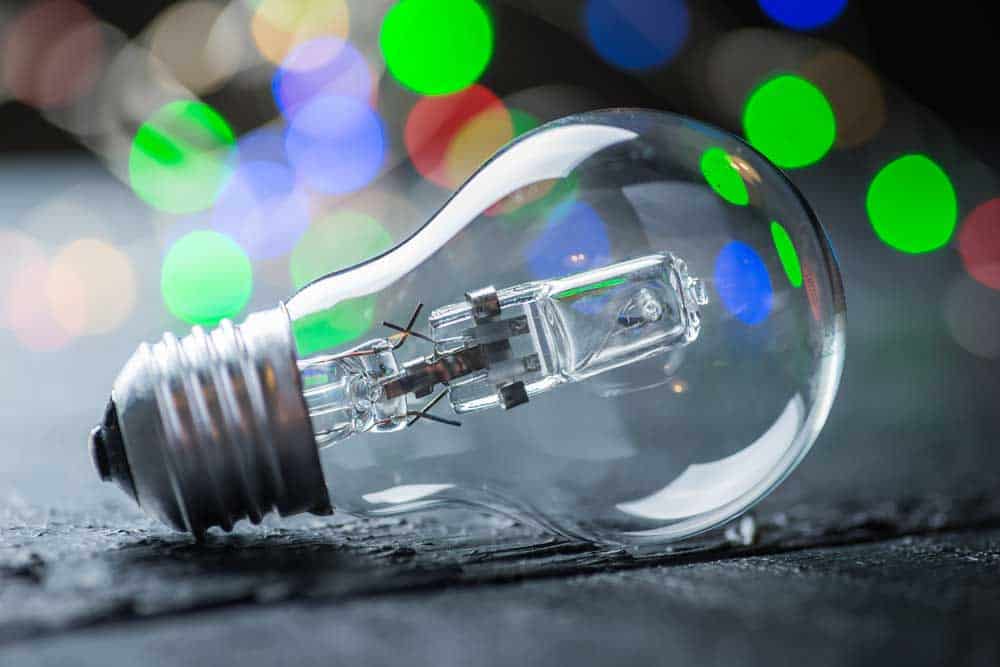
Halogen Bulb
Halogen lights use tungsten filament to generate light, like incandescent bulbs. But the main difference is that halogen lights generate light based on heat intensity. In short, more heat means more light. Also, the gas inside the bulbs prevents black spots from the heat.
Differences between LED and Halogen Lights
You’ve probably noticed LEDs are taking over the lighting industry. Here are some differences that’ll show you why:
The Halogen vs. LED: Brightness
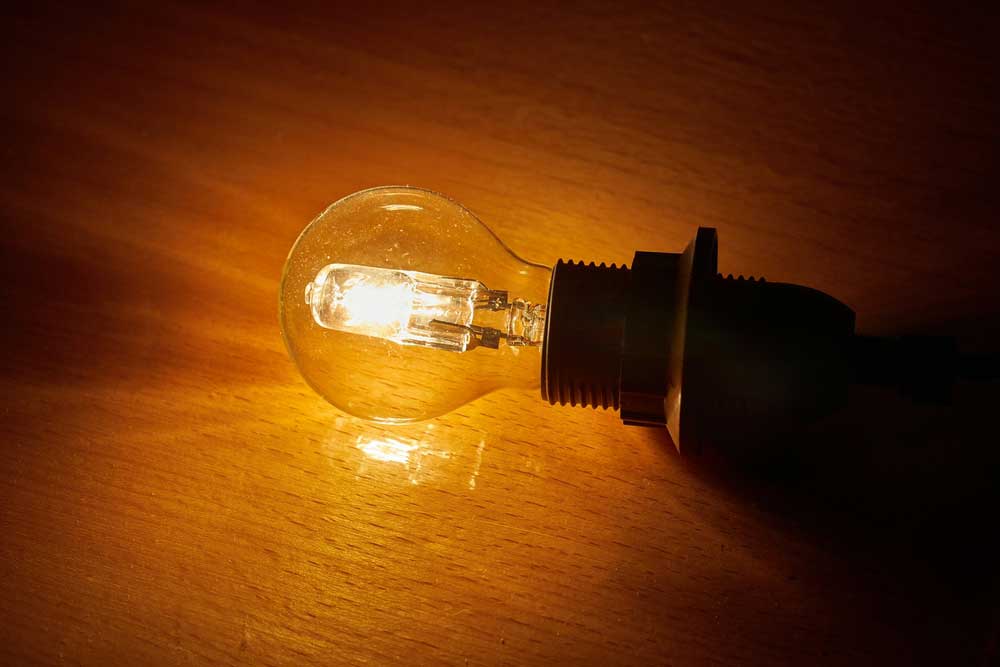
the Halogen Light
Halogen bulbs produce about 16 to 24 lumens per watt, which is bright enough for home and office use. But, the LED surpasses that with up to 100 lumens per watt.
Hence, you’ll get brighter light levels from LEDs than halogens, even if you have a less-powerful bulb. For instance, an 85-watt halogen bulb will be as bright as a 15-watt LED bulb.
Halogen vs. LED: Energy Efficiency
LEDs are also more energy-efficient than halogen bulbs. You can get lights brighter than halogens at lesser energy costs.
Interestingly, LEDs use about 85% less energy to produce the light you’ll get with halogen bulbs. In contrast, halogen lights need more power to generate more heat for more lumens.
Typically, these bulbs convert 80% of their energy into heat and 20% light. Hence, halogen lights have poor energy efficiency.
Halogen vs. LED: Cost
Although halogen lights have cheaper upfront costs, they fizzle out quicker than LEDs. So, you’ll spend more on maintenance and replacements, resulting in low cost-efficiency. They may also increase your electricity bills.
In contrast, LEDs are slightly more expensive to buy, but they offer more benefits in the long run. They last longer and don’t need regular maintenance. Since they’re energy-efficient, they’ll help cut down your electricity bills.
Halogen vs. LED: Color Temperature
Halogen emits light at 3000k, which gives off a soft white color. On the other hand, LEDs emit light in several color temperatures ranging from 1800k to 6500k. In short, you can get almost any color with LEDs.
Note: We measure color temperature on the Kelvin scale (K).
Halogen vs. LED: Life Expectancy
Good quality halogen bulbs can last up to 3600 hours, depending on the frequency of usage. Halogen bulbs will last two to three years, at four hours per day.
However, LEDs can last over 25000 hours, translating to over 15 years of use. Because of this extended life expectancy, LEDs are great for recessed lights or high ceilings where it’s challenging to change lights often.
Halogen vs. LED: Durability
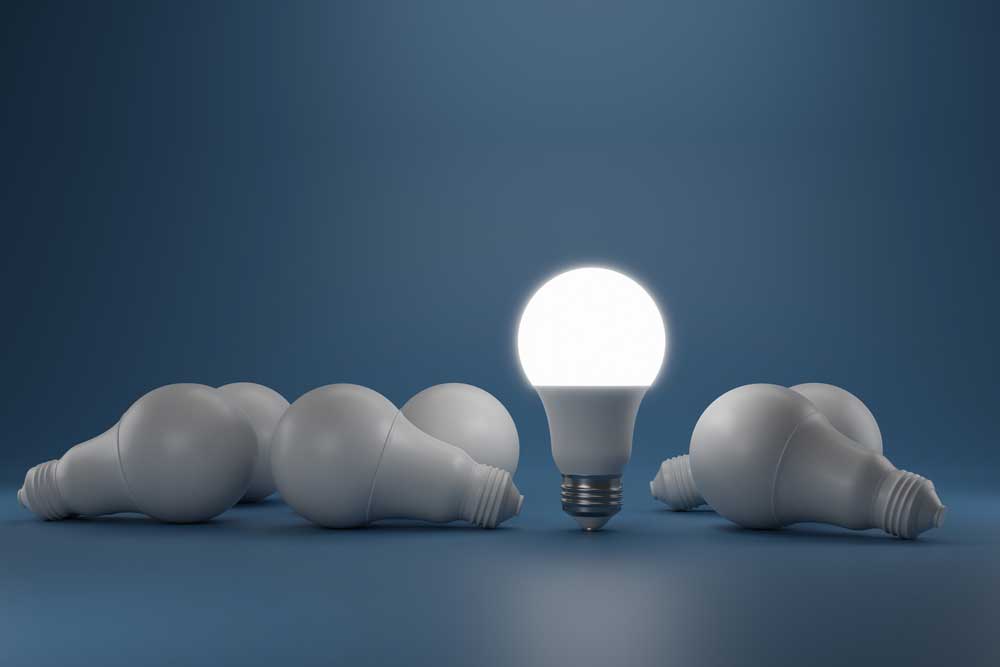
Glowing LED Bulb
Halogen bulbs are glass shells that can easily break. Halogen bulbs are pretty fragile. The tungsten filament inside the bulb is so sensitive that energy surges and vibrations can damage them.
Also, the halogen bulb can shatter if it overheats or gets splashed with cold water.
LEDs offer more durability since they lack fragile filaments. So they don’t shatter during electrical surges or when dropped.
Halogen vs. LED: Ultraviolet and Infrared Light Emission
Halogen lights emit ultraviolet and infrared rays. Hence, they need a glass filter or quartz to stop the sunlight from affecting how we see colors.
In contrast, LEDs don’t generate any form of ultraviolet or infrared light.
Halogen vs. LED: Risk of Burns
One of the benefits of LEDs is low heat generation. They only convert ten to twenty percent of their energy to heat, making them safer and less likely to start a fire.
As we mentioned earlier, heat is a significant aspect of halogen bulbs. Placing them near combustible materials or using the wrong lamp in a fixture increases the fire risk.
Halogen vs. LED: Warranty
Usually, Halogen has less attractive warranties when compared to LEDs. Sometimes they don’t have any promises.
Halogen vs. LED: For Reading
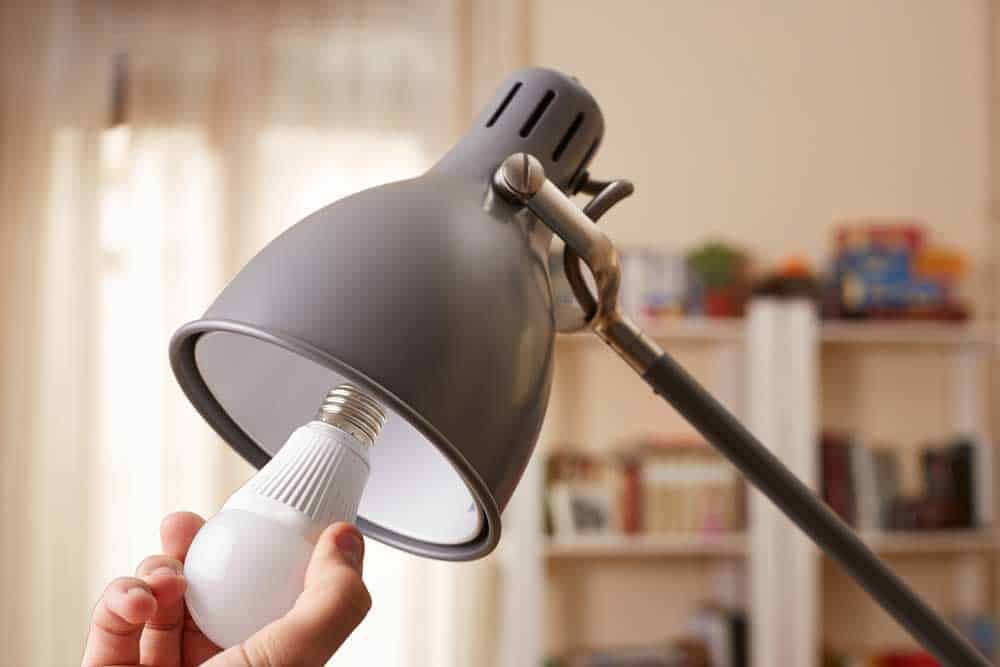
LED Bulb in Reading Lamp
LEDs offer more natural lights than halogen lights. Also, you can direct LED lights in one direction, while halogen lights have more spread. Hence, LEDs are ideal for focused reading.
Halogen vs. LED: Dimming Capabilities
Both LED, and halogen bulbs have dimming capabilities. However, you can dim halogen lights lower than LEDs.
But, using dimmer switches compatible with your LEDs will give you the required maximum dimming range.
LED vs. Halogen vs. Incandescent Comparison Table
| Features | LED | Halogen | Incandescent |
| Heat generation | 10% to 20% of consumed energy. | 80% to 90% of consumed energy. | 90% of consumed energy. |
| Lifespan | 25,000 to 60,000 hours. | 800 to 3600 hours. | 750 hours. |
| UV emission | No UV emission. | Minimal UV emission. | Major UV emission. |
| Infrared emission | No infrared emission. | Minimal infrared emission. | Significant infrared emission. |
| Cost | $6 to $8 per bulb. | $3 to $5 per bulb. | $1 per bulb. |
Which is Better: Halogen or LED?
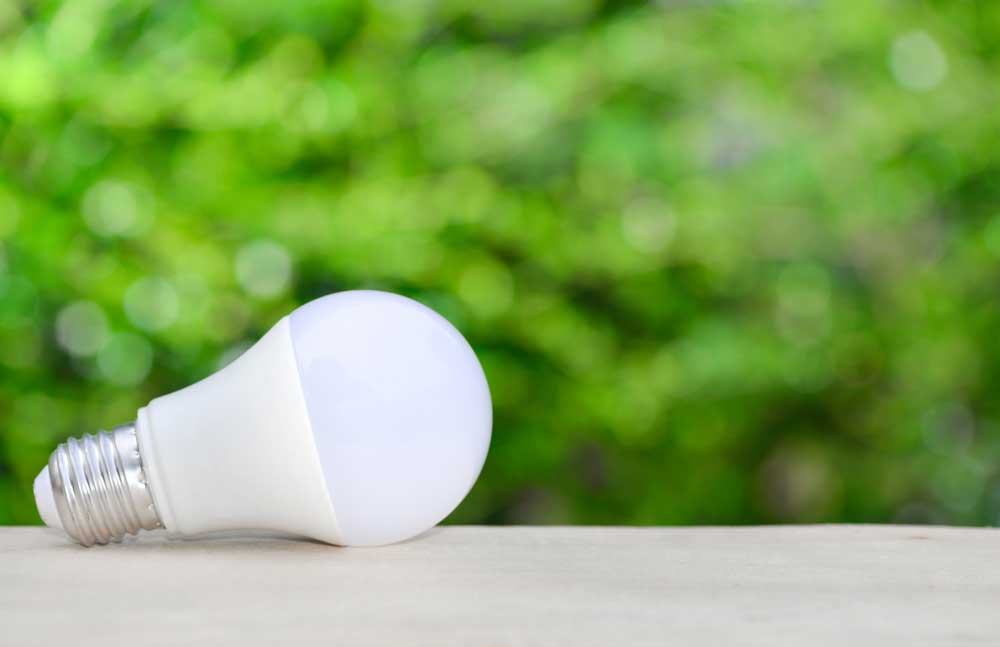
LED Bulb
LEDs are the better options for several reasons. First, they offer more benefits than halogen bulbs, the only disadvantage being its slightly expensive upfront cost.
Unlike halogen lights, LEDs are widely accepted because they’re environmentally friendly. And LEDs don’t feature toxic materials or flammable gas. So, they aren’t hazardous from continuous use.
Also, LEDs are excellent replacements for halogen bulbs. But you’ll need to watch out for the high and low-voltage halogen fixtures. You must use an LED with the same voltage as the Halogen you’re replacing.
For instance, a low-voltage halogen light fixture will have a transformer connection. So, you’ll need to get the transformer’s operating voltage before switching bulbs. It’s best if the LED has the same voltage rating (usually 12v or 24v).
Last Words
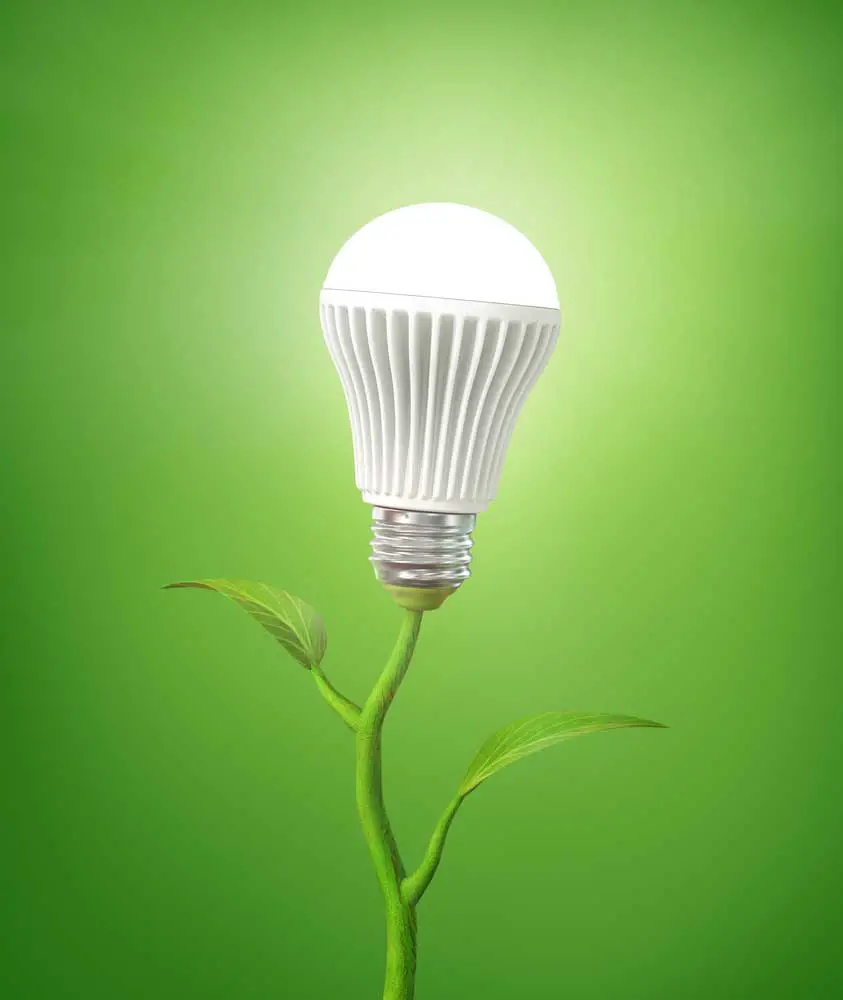
Green Energy LED
LED bulbs are energy-efficient and environmentally friendly lighting options. They use 100% green, recyclable energy and leave a tiny carbon footprint.
LEDs generate 80% to 90% less heat, so you don’t have to deal with the heat emission of halogen bulbs. Also, LEDs have longer lifespans than halogen bulbs. You can use them for as long as 15 years with little maintenance or need to replace them.
LEDs also have zero ultraviolet and infrared emissions, making them suitable for lighting areas like museums and jewelry stores where illumination is essential.
Do you have more questions? Feel free to reach us, and we’ll be happy to help.
